
Gallery Photographers
Partner
Artists-in-Residence
Image City Feature Articles
Gary's Photographic Tips
Newsletter Archive
If you are unable to visit our gallery and would like to purchase photographs from this preview or others in the gallery, please contact the gallery and call 585-271-2540.
Gallery Picks of the Show
Photographs by Jay BoersmaPeter Marr and Gallery Partners' have chosen their "Picks of the Show"
click here to return to the details of the exhibit
All images copyright by the individual photographers
Photographs by Jay Boersma:
Havana, Cuba, 2015 This is a creative, stellar, and thought-
provoking image. Certainly, there
is no such thing as objective vision, for one chooses all the time what
we see. That is why most viewers of this powerful print, will envision
two compelling eyes on an imaginary face, with perhaps the man taking
the place of the nose. What is evident is a very large wall or side of a
building, side-lit by warm, ambient lighting. It is apparent that this
wall has changed little over countless years, being subjected to many
paste and paint applications, resulting in an uneven and pock-marked
surface. Near the top of the wall are two large openings, possible
windows, more oval than circular, their surrounds suffering from crude
masonry and paint modifications. Above these two portals are what looks
like drainage pipes, their presence being emphasized by the sun’s rays
casting strong diagonals across the wall’s surface. At the foot of this
massive structure is a concrete pathway that slopes upwards from left to
right, and separates the wall from the old cobbled street, which is
partially shaded from the sun. Importantly, there is a middle-aged man
walking up the path, his eyes looking straight ahead, his figure casting
a strong pattern on the ground. He is casually, but neatly dressed, but
his manner has the air of avoidance from the bright yellow ochres and
the menacing objects above, even from the bright blue sky which
overlooks this dramatic scene. Although it may be just symbolism, and
just what I imagine in this image, this is what I see in this uplifting
print. There is no doubt in my mind that this is a decisive moment.
Towering above this man are two powerful apertures, which resemble eyes
in the sky, as though his presence and his purpose are being carefully
monitored. He does not look at these eyes, but he is aware of them.
Hopefully, he is cognizant that he is walking up a slope, and the strong
diagonal shadows from the drainage pipes are encouraging him onward. He
may realize that change in this country is almost non-existent, and will
probably not benefit him in his lifetime. Nevertheless, although the
man’s stride may not quicken in anticipation of a better life ahead,
deep down he knows that his people and his country will change for the
better, and hopefully in the not too distant future. Peter A. Marr
Oia, Santorini, Greece, 2013
Oia, is one of the most beautiful and picturesque villages of Santorini.
It has been the subject of a myriad of photographs and calendars, almost
all of them taken in bright sunlight, that emphasizes a blaze of
saturated hues set against dazzling white buildings, or as the
foreground for spectacular sunsets.
Jay is an artist and a master observer, and he is very aware that in
visual art, the most important thing is how the image is depicted,
rather than the image itself. This is what activates the brain’s reward
circuit. I am reminded of a poetic quotation from Thomas Merton which
states, “Art enables us to find ourselves and lose ourselves at the same
time.” This delightful image that Jay has of Oia, expands the viewer’s
vision, thoughts, and personal horizons. What makes this print so
penetrating and evocative is the lighting, and the exquisite manner in
which the village is framed inside the surrounding landscape. Gone is
the bright, powerful sun that normally pervades this setting. Instead,
there is a soft ambient illumination that results in lovely visual
continuity that accentuates the wonderful diversity of color, especially
in the pastel renderings of the buildings. Lowering the lighting values
only enhances the impressive detail and color harmony of every building,
especially revealing the broad swath of pastel colors, hues which are
lost in bright sunlight. It is very evident that there is no universal
architectural plan for this village. It is perched on a steep outcrop,
and every available piece of land has been utilized to the fullest. Most
buildings emphasize vertical rather than horizontal structures, and the
streets are as narrow as possible to minimize loss of precious land.
Even in a more subdued lighting environment, there is no loss in detail,
color and charm for this very beautiful village. What really makes this
image so awesome is the way that Jay has creatively framed the imposing
subject matter. The foreground in particular is dramatic and compelling,
in deep shade, but with subtle shapes and content that are still
visible, all of which adds intrigue and mystery to the entire piece.
This entrancing foreground is complemented creatively by the darkened
sky and subtle detail in the area across the water enhancing the feeling
that the village appears to float in space. Like the majority of Jay’s
wonderful images, there is a complete absence of people, which gives the
added dimension that viewers can imagine they are really there, and have
the freedom to explore every segment of this village without ever going
there in person. Peter A. Marr
Downtown
David Bleich has dusted the detailed elements of a
downtown Rochester photograph with a palate of soft colors.
With its subtle pastel colors the image provides delicate color
contrast. However, the sharp
details of the bridge and buildings within the photograph produces, high
structural contrast. The combination of structural sharpness in
combination with soft color contrast produces an artistically pleasant
landscape photograph.
Compositionally, David has placed the major pinkish
building slightly off center and nicely nestled under the arch of the
bridge. The horizontal
details in the river counter balance the wide arch of the bridge, thus
enhancing the photograph’s panoramic format. Careful examination of the
photograph reveals good definition within the elements of the buildings.
Interesting color patterns are presented on the surface of
buildings and within reflections on the building windows.
We congratulate David Bleich for creatively producing this
wonderfully surreal image of Downtown Rochester.
Revealing Neutrality – Amelia
Tim has displayed a wonderful series of black and
white portraits far removed from the traditional high school graduation
picture standard look. We all have seen these kinds of photographs,
where every student has an almost identical expression and really tells
you nothing about the individual.
Instead of just capturing what Amelia looks like,
this photograph gives insight into her personality. Her eyes are wide
open, staring at the camera. She is not symmetrically framed in the
photograph which adds to the “off kilter” feeling the viewer gets.
Tim has taken these photographs possibly as a way of rebelling
against the homogenization of student portraits, in a very effective
way.
An interesting exercise would be to stare at this
photograph for at least five minutes and then sit down and write a story
about Amelia. Is she a young lady who likes to make funny faces?
Challenge the status quo? Dislikes being photographed? Is trying to
hypnotize the photographer? Or any other number of possibilities.
Communication
David’s photographs often incorporate whimsy, in a very clever way. Many
of his photographs in this East Gallery show display this trait. The
whimsy is still there in this photo, but in addition this photograph
Communication is a wonderful example of a characteristic of excellent
photographs, displaying “gesture”. Gesture can be between people or with
inanimate objects and focuses on interactions and display of
personality.
David conveys the feeling of mystery in this photograph of a man and a
woman. What is she saying? What is the relationship between the two
people? What is the significance of her hand gently upon his shoulder
which is barely in the photograph?
Unlike a traditional portrait the subjects are not
completely in the frame, the man is barely seen, just the glint of his
eye looking at the woman. This leads to this air of mystery about what
the communication really is between these two people.
This photograph makes the viewer ask these and other questions,
providing an opportunity to think about what is being conveyed by David
about this relationship.
Any photograph that makes the viewer ponder its meaning, rather than
just acknowledging it and passing on, deserves praise.
Peter
Marr's Picks
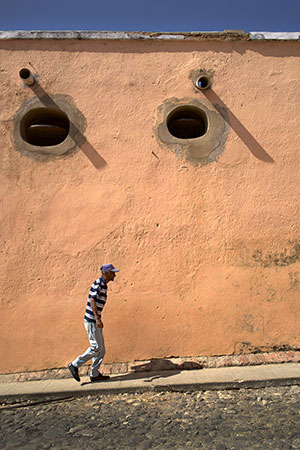

by Jay Boersma
Partners' Picks
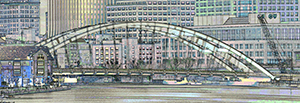
by David Bleich
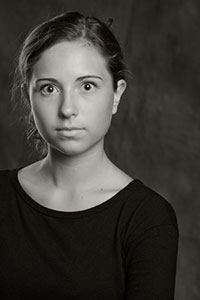
by
Tim Fuss
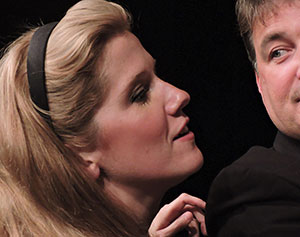
by David Perlman
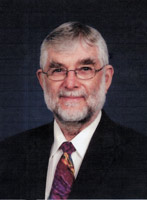
We are very grateful to Peter for his thorough review
and selection for Peter's Picks. Peter was born in England in 1935 and
came to live in the United States in 1968. He worked for the Eastman
Kodak Company for 34 years, retiring in 1998. During his employment and
continuing into retirement, he has been an enthusiastic photographer.
His photography has won him numerous awards throughout Kodak and in
International Salons, including 5 George Eastman Medals, which is the
top honor awarded to the most outstanding picture in the Annual Kodak
International Salon. He has served as a judge in both local and
international photographic competitions for the past 20 years, and is a
Past president of the Kodak Camera Club and past chairman of many of the
Kodak Camera Club organizations. In the past five years or so, he has
devoted his photographic skills and interest into nature photography,
notably bird photography. His bird photography has been the subject of
several one-person exhibits, the most recent being at Ding Darling NWR,
in Sanibel, Florida, The Roger Tory Peterson Institute in Jamestown, New
York, and at the Webster Public Library in Webster, NY.
Image City Photography Gallery ♦ 722 University Avenue ♦ Rochester, NY 14607 ♦ 585.271.2540
In the heart of ARTWalk in the Neighborhood of the Arts